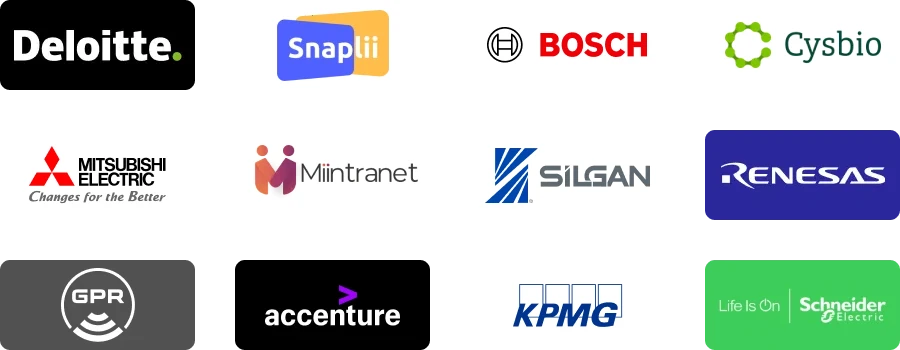| REPORT ATTRIBUTE |
DETAILS |
| Historical Period |
2019-2022 |
| Base Year |
2023 |
| Forecast Period |
2024-2032 |
| Latin America Bottled Water Market Size 2023 |
USD 14,863.53 Million |
| Latin America Bottled Water Market, CAGR |
7.09% |
| Latin America Bottled Water Market Size 2032 |
USD 24,324.23 Million |
Market Overview
The Latin America Bottled Water Market is projected to grow from USD 14,863.53 million in 2023 to USD 24,324.23 million by 2032, at a CAGR of 5.37%.
The Latin America bottled water market is driven by increasing health consciousness among consumers, leading to a growing preference for bottled water over sugary beverages. The rising demand for convenient, on-the-go hydration solutions further boosts market growth. Moreover, enhanced awareness of water quality and safety standards fuels the shift towards bottled water as a safer alternative. The region’s expanding middle-class population and improving disposable incomes also contribute to the market’s expansion, with consumers increasingly willing to spend on premium bottled water options. Additionally, growing concerns about environmental sustainability are driving innovation in eco-friendly packaging, with brands adopting biodegradable and recyclable materials. Urbanization and changing lifestyles are contributing to higher consumption rates, particularly in large cities. These factors, combined with strong distribution networks, are expected to continue shaping the market’s trajectory, creating new opportunities for growth in the bottled water sector across Latin America.
The Latin America bottled water market demonstrates significant growth potential across diverse geographical regions, driven by rising health consciousness and the demand for convenient hydration solutions. Countries like Brazil and Argentina lead the market, supported by urbanization, increasing disposable incomes, and a shift towards healthier beverage options. Meanwhile, emerging markets within the region, including Peru, Chile, and Colombia, exhibit growing demand due to improved access to bottled water and enhanced distribution networks. Key players in the market include global giants such as Nestlé, Danone S.A., The Coca-Cola Company, and PepsiCo Inc., alongside prominent regional brands like Minalba Brasil, Gota Water S.A., and Compañía Cervecerías Unidas (CCU). These companies drive market innovation through new product launches, sustainable packaging initiatives, and targeted marketing strategies. The competitive landscape is further characterized by a focus on premium and functional water offerings, catering to evolving consumer preferences and promoting steady market expansion.
Access crucial information at unmatched prices!
Request your sample report today & start making informed decisions powered by Credence Research Inc.!
Download Sample
Market Insights
- The Latin America bottled water market is projected to grow from USD 14,863.53 million in 2023 to USD 24,324.23 million by 2032, at a CAGR of 5.37%.
- Rising health consciousness and a shift towards healthier beverage options are key drivers of market growth.
- Increasing urbanization and higher disposable incomes are boosting demand for premium and functional bottled water.
- Environmental concerns, including plastic pollution and water scarcity, pose significant challenges to market expansion.
- Brazil and Argentina are major markets, with growing consumption driven by urban populations and enhanced distribution networks.
- Key players like Nestlé, Danone S.A., and The Coca-Cola Company focus on innovation and sustainability to maintain a competitive edge.
- The market’s growth is supported by government investments in water infrastructure and consumer preference for eco-friendly packaging solutions.
Market Drivers
Government Initiatives and Regulations
Government investments in water infrastructure and sanitation indirectly boost the bottled water market by addressing water quality concerns. Enhanced water quality standards lead to higher consumer confidence in bottled water as a safer alternative. For instance, the Lazos de Agua Program aims to provide sustainable access to safe water, sanitation, and hygiene to around 200,000 Latin Americans, thereby improving water quality and boosting consumer confidence in bottled water. Additionally, stricter regulations around water quality, labeling, and packaging help improve transparency and trust in bottled water brands. These regulatory measures create a more secure and reliable market for consumers, thus promoting bottled water as a preferred product.
Growing Health and Wellness Consciousness
The rising awareness of waterborne diseases, especially in rural areas, is a key driver of the Latin American bottled water market. Consumers are increasingly aware of the risks associated with contaminated water sources, prompting a shift towards safer and cleaner drinking options. For instance, a report by the World Health Organization highlights that waterborne diseases such as cholera and dysentery are prevalent in rural areas, driving the demand for bottled water as a safer alternative. In addition, the growing focus on healthier lifestyles is pushing individuals to adopt more water-centric habits. As people prioritize their well-being, the consumption of bottled water has become a preferred choice to stay hydrated. Additionally, the rising demand for functional waters infused with vitamins, minerals, and antioxidants is gaining traction, as consumers seek added health benefits beyond hydration.
Urbanization and Rising Disposable Incomes
Urbanization is a significant factor driving bottled water consumption in Latin America. As people move to urban areas for better job opportunities and lifestyles, the demand for convenient, ready-to-drink products like bottled water rises. For instance, a report by the Inter-American Development Bank notes that urbanization in Latin America has led to increased demand for bottled water due to the convenience it offers in fast-paced urban environments. Alongside this, the growing middle-class population with higher disposable incomes is also contributing to market growth. These consumers are increasingly able to afford premium bottled water brands, seeking higher quality, flavor, and health-conscious products. As urban living continues to expand, bottled water consumption is expected to continue rising.
Marketing, Branding, and E-commerce Growth
Aggressive marketing campaigns and innovative packaging strategies are helping major beverage companies differentiate their bottled water products in a competitive market. Eye-catching, eco-friendly packaging attracts environmentally conscious consumers and fosters brand loyalty. Furthermore, the rise of e-commerce platforms has provided new distribution channels for bottled water, making it more accessible to a broader audience. Online retail growth is expanding market reach, enabling consumers to conveniently purchase bottled water, particularly premium options, from the comfort of their homes. Despite these drivers, challenges such as environmental concerns, price sensitivity, and competition from other beverages remain significant.
Market Trends
Health and Wellness Trends Driving Market Growth
Growing health consciousness among consumers is a key driver in the Latin American bottled water market. With increasing awareness about the dangers of waterborne diseases, particularly in rural areas, consumers are turning to bottled water as a safer and more reliable source of hydration. As more people adopt healthier lifestyles, there is a notable shift towards greater water consumption to improve overall well-being. This trend is further supported by the growing demand for functional waters that offer added health benefits, such as vitamins, minerals, and antioxidants. For instance, a survey by the Latin American Health and Wellness Institute found that consumers are increasingly opting for functional beverages that offer additional health benefits. These enhanced water products are becoming increasingly popular, as consumers seek functional beverages that align with their wellness goals. This focus on health, safety, and functionality is fueling market growth as more consumers look to bottled water as a key part of their healthy living choices.
Urbanization, Economic Growth, and E-commerce Expansion
Urbanization is driving increased bottled water consumption, as more people migrate to urban centers in search of better living and employment opportunities. This shift to urban areas results in greater demand for convenient, high-quality products like bottled water, especially in busy city environments. Along with urbanization, rising disposable incomes among the growing middle class are enabling more consumers to afford premium bottled water brands, which offer superior quality, taste, and added benefits. This economic growth is contributing to a shift toward higher-end bottled water products. Additionally, government investments in water infrastructure and stricter regulations around water quality are improving consumer trust in bottled water as a reliable and safe option. At the same time, aggressive marketing strategies and innovative packaging designs are helping companies differentiate their products in a competitive market. Eco-friendly packaging is particularly appealing to environmentally conscious consumers, further supporting market expansion. Finally, the rapid growth of e-commerce platforms is providing new opportunities for bottled water distribution. The increasing penetration of online retail allows consumers to easily purchase their preferred bottled water products, including premium and functional waters, from the comfort of their homes. As e-commerce continues to expand, the accessibility of bottled water will likely increase, helping to drive further market growth.
Market Challenges Analysis
Environmental and Regulatory Challenges Impacting Market Growth
Environmental concerns, particularly plastic pollution and water scarcity, pose significant challenges to the Latin American bottled water market. The excessive use of plastic bottles has become a major contributor to environmental degradation, with increasing pressure from consumers and environmental groups to reduce plastic waste. For instance, a report by the United Nations University Institute for Water, Environment, and Health highlights that plastic pollution from bottled water is a significant environmental issue, prompting calls for more sustainable packaging solutions. Additionally, the over-extraction of water for bottling purposes in certain regions is exacerbating water scarcity issues, leading to growing concerns about sustainability in the industry. As bottled water consumption continues to rise, the need for more sustainable packaging solutions and responsible water sourcing practices is becoming critical. On top of environmental issues, regulatory hurdles are also complicating market growth. Latin American countries have varying regulations concerning water quality standards, labeling requirements, and taxes on bottled water products, making it difficult for businesses to navigate the regulatory landscape. These inconsistencies can lead to added costs, delays, and legal challenges for companies operating across multiple markets. Bureaucratic complexities further slow down the implementation of new business strategies, making it harder for companies to achieve growth in the region.
Economic and Competitive Pressures in the Market
Economic volatility poses another significant challenge for the Latin American bottled water market. Currency fluctuations and political instability in the region can directly impact production costs and the distribution of bottled water, making it harder for businesses to maintain stable pricing. For instance, a report by White & Case LLP notes that economic volatility in Latin America can lead to increased production costs and distribution challenges for the bottled water industry. Economic downturns can also reduce consumer purchasing power, particularly for premium bottled water brands, leading to lower sales volumes and squeezing profit margins. In addition to economic factors, intense competition within the market is putting pressure on businesses. Both local and international brands are fiercely competing for market share, leading to price wars that erode profit margins and force companies to find innovative ways to differentiate their products. This heightened competition, coupled with the growing demand for eco-friendly and functional products, makes it increasingly difficult for brands to maintain a competitive edge. Furthermore, infrastructure and logistical challenges in some regions hinder the efficient distribution of bottled water. Limited infrastructure, especially in rural or remote areas, creates difficulties in ensuring a consistent and reliable supply chain. This can lead to delays in distribution and a lack of availability in key markets, further challenging companies trying to expand their reach.
Market Opportunities
Growing Demand for Premium and Functional Bottled Water
The Latin American bottled water market presents significant opportunities driven by shifting consumer preferences towards premium and functional products. With a growing health-conscious population, consumers are increasingly seeking bottled water infused with added benefits such as vitamins, minerals, and antioxidants. This trend toward functional waters is expected to continue, offering brands the chance to introduce innovative products that cater to the wellness-focused segment. As disposable incomes rise, particularly within the expanding middle class, there is greater willingness to invest in higher-quality bottled water, creating opportunities for premium brands to capture market share. Companies that can offer unique water types, such as alkaline, spring, or mineral water, can appeal to the growing demand for more specialized hydration solutions.
Sustainability and E-commerce Expansion
Sustainability remains a crucial growth avenue for the bottled water industry in Latin America. As environmental concerns over plastic waste intensify, there is a growing opportunity for brands to invest in eco-friendly packaging solutions, such as biodegradable, recyclable, or reusable bottles. Companies that prioritize sustainability in their product offerings will likely appeal to environmentally conscious consumers and benefit from positive brand differentiation. Furthermore, the rise of e-commerce in the region presents a valuable opportunity for bottled water companies to expand their distribution channels. With the increasing penetration of online retail, brands can reach a broader consumer base and tap into the growing trend of online shopping, offering convenience and direct-to-consumer sales models. This dual focus on sustainability and e-commerce positions companies to leverage new market opportunities while addressing evolving consumer needs.
Market Segmentation Analysis:
By Water Source:
The Latin American bottled water market is segmented by water source, catering to diverse consumer preferences and needs. Natural mineral water leads the segment due to its perceived health benefits and purity, sourced directly from natural springs and aquifers. Purified water is widely popular, attributed to its affordability and extensive availability, making it a staple for households and businesses. Spring water, known for its freshness, appeals to health-conscious consumers seeking natural hydration solutions. Artesian water, extracted from underground aquifers, is gaining traction in premium markets for its unique mineral composition and purity. Sparkling water has witnessed a surge in demand among urban consumers, offering a fizzy and refreshing alternative. Similarly, alkaline water, promoted for its potential health benefits in balancing pH levels, is carving a niche in the wellness segment. These varied water sources provide bottled water brands ample opportunities to target specific consumer demographics and expand their product portfolios.
By Packaging Water Source:
Packaging plays a pivotal role in the Latin American bottled water market, influencing consumer choices and brand positioning. PET (Polyethylene Terephthalate) bottles dominate the market due to their cost-effectiveness, lightweight nature, and convenience, catering to mass-market demand. Glass bottles, associated with premium quality and sustainability, are gaining popularity among environmentally conscious consumers and upscale product segments. Cartons and pouches, recognized for their eco-friendly attributes and ease of use, appeal to consumers prioritizing sustainable options. Cans, although a smaller segment, are becoming increasingly popular for sparkling and premium water offerings, given their recyclability and trendy appeal. With growing concerns over environmental impact, packaging innovation is becoming a critical area of focus for bottled water companies. Investments in sustainable packaging solutions and advancements in material technology are expected to play a significant role in driving market growth, enabling brands to differentiate themselves in an increasingly competitive landscape.
Segments:
Based on Water Source:
- Natural Mineral Water
- Purified Water
- Spring Water
- Artesian Water
- Sparkling Water
- Alkaline Water
Based on Packaging Water Source:
- PET (Polyethylene Terephthalate) Bottles
- Glass Bottles
- Cartons and Pouches
- Cans
Based on End-user:
- Households
- Foodservice and Hospitality
- Offices and Corporate
- Healthcare Facilities
- Outdoor and On-the-Go
- Institutional Buyers
Based on Product Varieties:
- Still Water
- Carbonated Water
- Flavored Water
- Functional Water
- Vitamin-Enhanced Water
- Premium Water
Based on Pack Sizes:
- Individual-Serve Bottles
- Multi-Serve Bottles
- Bulk Packaging
Based on Distribution Channel:
- Supermarkets and Hypermarkets
- Convenience Stores
- Online Retail
- Vending Machines
- Wholesalers and Distributors
Based on the Geography:
- Brazil
- Argentina
- Peru
- Chile
- Colombia
- Rest of Latin America
Regional Analysis
Brazil
Brazil holds the largest share of the bottled water market in Latin America, accounting for approximately 45% of the regional market. The country’s strong position is driven by a large and growing population, rising urbanization, and increasing health awareness among consumers. Brazilian consumers are shifting towards healthier beverage options, with bottled water becoming a preferred choice over sugary drinks. The increasing demand for premium bottled water and functional waters, such as alkaline and mineral water, further boosts market growth. Additionally, Brazil’s growing middle class, coupled with higher disposable incomes, supports the consumption of premium and branded bottled water products. The government’s investments in water infrastructure and improvements in distribution networks have also facilitated the growth of the bottled water market. However, the country faces challenges, such as environmental concerns related to plastic waste and economic instability, which could impact the market in the future. Despite these hurdles, Brazil remains the primary driver of the Latin American bottled water market, and continued innovation in water products and packaging is expected to support its growth.
Argentina
Argentina is the second-largest market for bottled water in Latin America, accounting for around 12% of the regional market share. The country has seen a steady increase in bottled water consumption due to growing concerns over water quality and the increasing popularity of healthier beverages. In addition to traditional still water, there is a rising demand for sparkling and functional water products, which are gaining traction in urban areas. Argentina’s economic fluctuations and price sensitivity can affect consumer purchasing behavior, but the demand for bottled water remains robust, especially among health-conscious individuals. The country’s proximity to Chile, Peru, and Colombia also positions Argentina as a key player in the Andean region’s bottled water market. As urbanization continues and more consumers become aware of the benefits of clean drinking water, the bottled water market in Argentina is expected to grow. Additionally, ongoing investments in water infrastructure and environmental sustainability practices will play a key role in shaping the market’s future trajectory.
Key Player Analysis
- Nestlé
- Minalba Brasil
- Danone S.A.
- The Coca-Cola Company
- PepsiCo Inc.
- Gota Water S.A.
- AlunCo
- Socorro Bebidas
- Poty Cia. de Bebidas
- Compañía Cervecerías Unidas (CCU)
Competitive Analysis
The competitive landscape of the Latin America bottled water market is characterized by the presence of prominent global and regional players. Leading companies such as Nestlé, Danone S.A., The Coca-Cola Company, PepsiCo Inc., Minalba Brasil, and Compañía Cervecerías Unidas (CCU) dominate the market. These key players leverage their strong brand recognition, extensive distribution networks, and innovative product offerings to maintain a competitive edge. Major players in the market emphasize product diversification, introducing options such as functional waters, sparkling water, and premium offerings to cater to evolving consumer preferences. The growing emphasis on sustainability has prompted investments in eco-friendly packaging solutions, such as biodegradable materials and recyclable designs, addressing consumer concerns over environmental impacts. Marketing and branding efforts, particularly through digital platforms, have become pivotal for maintaining market visibility and engaging with diverse consumer segments. Companies are also enhancing their distribution networks to reach urban and rural areas, ensuring product availability and affordability. Additionally, the focus on leveraging advanced technologies for water purification and packaging further strengthens competitive positioning. The market’s dynamic nature encourages innovation and strategic initiatives, enabling players to stay ahead in an increasingly competitive environment.
Recent Developments
- In July 2024, Source, a company based in Scottsdale, Arizona, unveiled a groundbreaking method to tackle the water crisis by generating canned water using air and sunlight. This initiative is part of the increasing trend toward sustainable technologies that aim to resolve environmental challenges while ensuring access to vital resources. The product will be branded as Sky Wtr and is designed to offer an off-grid solution for producing drinking water. Source intends to launch this water for public sale across the U.S. in major retail outlets around August or September 2024. The canned drinking water will be packaged in recyclable aluminum cans and bottles.
- In February 2024, Gatorade announced the launch of its first unflavored water product, Gatorade Water in the U.S., marking a significant expansion into the bottled water category. This move is part of Gatorade’s strategy to diversify its offerings beyond traditional sports drinks and tap into the growing market for functional beverages. Gatorade Water is available nationwide across various retail platforms as well as on Amazon, and Gatorade.com.
- In April 2023, Nestlé partnered with Acreto, a company focused on sustainable packaging, to launch a new line of bottled water made from 100% plant-based materials.
- In February 2023, PepsiCo partnered with biotech company LanzaTech to develop a new process for producing bottled water from captured carbon emissions.
- In January 2023, Icelandic Glacial signed an exclusive deal as the official in-flight water partner with Icelandair, Iceland’s national airline
Market Concentration & Characteristics
The Latin America bottled water market exhibits a moderate to high level of market concentration, with key players dominating a significant share of the industry. These established companies leverage their extensive distribution networks, strong brand equity, and diverse product portfolios to maintain a competitive edge. The market is characterized by a mix of global and regional players, each targeting specific consumer segments based on preferences, income levels, and geographical factors. Premiumization is a notable characteristic, with increasing demand for high-quality bottled water options such as natural mineral water, sparkling water, and functional waters infused with vitamins and minerals. Sustainability has become a key focus, driving innovation in eco-friendly packaging solutions and water sourcing practices to address environmental concerns. The market is also influenced by shifting consumer lifestyles, urbanization, and the rising preference for convenient and healthier hydration options.
While larger players dominate urban markets, smaller and regional players cater effectively to rural areas and niche markets, offering affordable and locally sourced options. Overall, the Latin American bottled water market’s concentration fosters competitive innovation while encouraging efforts to meet diverse consumer needs across different economic and geographic landscapes.
The Latin America bottled water market exhibits a moderate to high level of market concentration, with key players dominating a significant share of the industry. These established companies leverage their extensive distribution networks, strong brand equity, and diverse product portfolios to maintain a competitive edge. The market is characterized by a mix of global and regional players, each targeting specific consumer segments based on preferences, income levels, and geographical factors. Premiumization is a notable characteristic, with increasing demand for high-quality bottled water options such as natural mineral water, sparkling water, and functional waters infused with vitamins and minerals. Sustainability has become a key focus, driving innovation in eco-friendly packaging solutions and water sourcing practices to address environmental concerns. The market is also influenced by shifting consumer lifestyles, urbanization, and the rising preference for convenient and healthier hydration options. While larger players dominate urban markets, smaller and regional players cater effectively to rural areas and niche markets, offering affordable and locally sourced options. Overall, the Latin American bottled water market’s concentration fosters competitive innovation while encouraging efforts to meet diverse consumer needs across different economic and geographic landscapes.
Shape Your Report to Specific Countries or Regions & Enjoy 30% Off!
Report Coverage
The research report offers an in-depth analysis based on Water Source, Packaging Water Source, End-User, Product Varieties, Pack Sizes, Distribution Channel and Geography. It details leading market players, providing an overview of their business, product offerings, investments, revenue streams, and key applications. Additionally, the report includes insights into the competitive environment, SWOT analysis, current market trends, as well as the primary drivers and constraints. Furthermore, it discusses various factors that have driven market expansion in recent years. The report also explores market dynamics, regulatory scenarios, and technological advancements that are shaping the industry. It assesses the impact of external factors and global economic changes on market growth. Lastly, it provides strategic recommendations for new entrants and established companies to navigate the complexities of the market.
Future Outlook
- The Latin America bottled water market is expected to witness robust growth driven by rising health and wellness awareness among consumers.
- Increasing urbanization and higher disposable incomes will continue to boost demand for premium and functional bottled water products.
- Sustainability will remain a key focus, with companies investing in eco-friendly packaging and water conservation initiatives.
- Advances in water purification technologies are likely to enhance product quality and expand consumer trust in bottled water brands.
- Online retail channels are anticipated to grow, providing consumers with greater access to bottled water products through e-commerce platforms.
- Emerging markets in the region, such as Peru and Colombia, will offer significant growth opportunities due to improving infrastructure and rising consumer awareness.
- Product innovation, including the introduction of new flavors and health-oriented water options, will attract diverse customer segments.
- Marketing campaigns emphasizing health benefits and environmental sustainability will strengthen brand engagement and visibility.
- Strategic partnerships and collaborations between global and regional players are likely to enhance market reach and operational efficiency.
- Regulatory frameworks supporting water quality and labeling will foster consumer trust and ensure market stability in the coming years.







